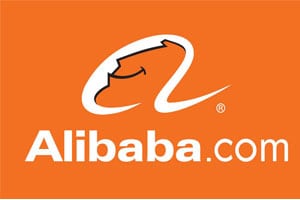 The ability to get orders into the hands of consumers rapidly and to directly connect with them, while providing price transparency, are among the keys to success in cross-border ecommerce into China, an Alibaba executive told the audience this week at Growing Global 2015 in Hollywood, CA.
The ability to get orders into the hands of consumers rapidly and to directly connect with them, while providing price transparency, are among the keys to success in cross-border ecommerce into China, an Alibaba executive told the audience this week at Growing Global 2015 in Hollywood, CA.
“Definitely never send anything that takes five to seven days,” said Jimmy Tobyne, who oversees strategic partnerships and business development at Alibaba.com. “Even if there are higher costs, you need to meet their expectations. Once they put a negative review on your store (on Alibaba sites Tmall and Taobao), it’s hard to get it taken down, because reviewers have to do it themselves.”
To facilitate rapid delivery, and to avoid China’s 17% value-added tax on imports, Tobyne said merchants should consider parking inventory in one of a handful of Chinese free trade zones and using a local fulfillment partner. To do business on Tmall or Taobao, for instance, Alibaba requires merchants to have an in-country partner to handle returns. Meeting the two-day delivery window that Tobyne said is critical to winning the Chinese consumer would require some type of local fulfillment operation.
As for customer service, Tobyne said 90% of Chinese ecommerce transactions involve some type of interaction between buyer and seller. “Chinese society operates through personal relationships,” he said. “While online seems impersonal, it’s been sufficient and a driving force as Chinese ecommerce has exploded. When instant messaging was combined with customer service, it went boom.”
Chinese consumers spent $34 billion in 2013 on cross-border ecommerce goods, a figure expected to nearly quadruple to $163 billion by 2018, according to AC Nielsen. Ecommerce represented 20% of retail sales in 2014, compared to about 5% in the U.S., and is projected to reach 25% by 2020, Tobyne said.
Two-thirds of Chinese cross-border shoppers – referred to as hai tao, literally “ocean search” – are female, with 44% making between $15,000 and $40,000. Sixty percent of them are married with children. Beauty products (31%), baby care (17%) and food (11%) represent the three largest cross-border ecommerce categories, according to Tmall’s figures.
Not surprisingly given the large amount of counterfeit goods on the Chinese market, consumers there list product authenticity guarantees among their top demands from retailers. Other preferences include Chinese language customer service, cost transparency, detailed product information and a simplified shopping process.
“Because of all the counterfeits that plague the Chinese market, you have to over-compensate for that in any way you can, and you’ll benefit in the long run,” Tobyne said. “It may sound silly, but do something like pasting a photo of the import documentation so the customer feels safe and happy, and knows you’re legitimate. They have to see that.”
When asked about the ability to do business profitably in China given all the challenges and costs, Tobyne said it can be done but it takes a major commitment.
“When you do a market entry, you can’t take shortcuts,” he said. “When going into China you need to choose it, but it may not always choose you back. If you make a commitment to be there, you’ll get all that you need and more. With luck, skill and strategy it will choose you.”
Some other tips from Tobyne:
- Don’t assume Chinese customers know about your brand. “You have to spend a lot of money and have a terrific strategy to get your product in front of people,” he said. “Online is good but it might not be enough; you need to come up with other ways to complement that.”
- Being nimble and flexible is paramount, because things change so rapidly in Asia. “You have to plan to be ready when changes occur,” he said. “Each time there’s a food scandal in China, it’s an opportunity for all of you. You can not only make sales, but be seen as doing good.”
- Make sure you’re very upfront about any costs related to your product. “If there is anything that causes additional costs, customers get very frustrated and will turn on you quickly, even if they were previously loyal,” Tobyne said.
